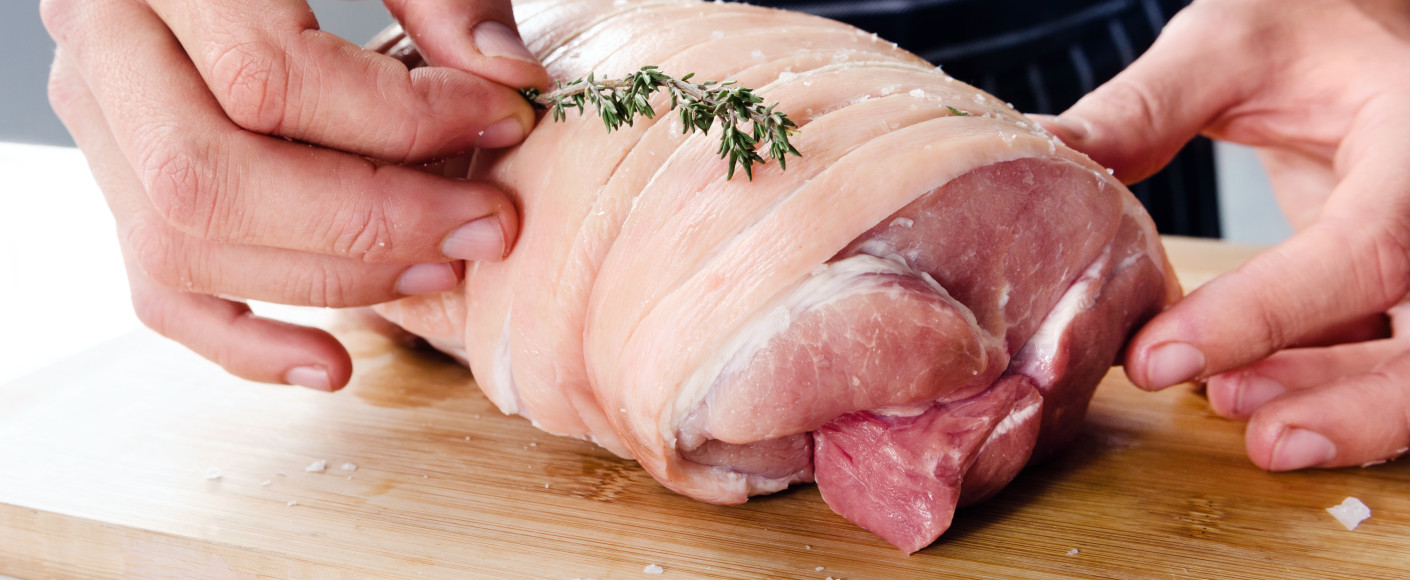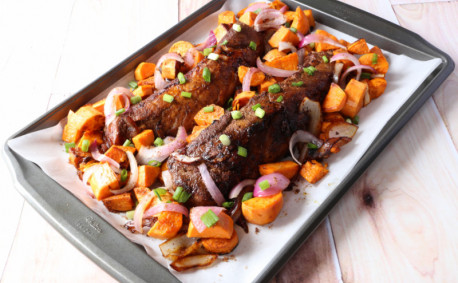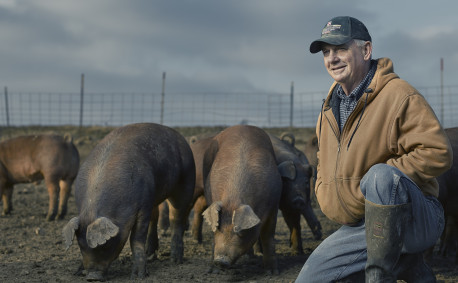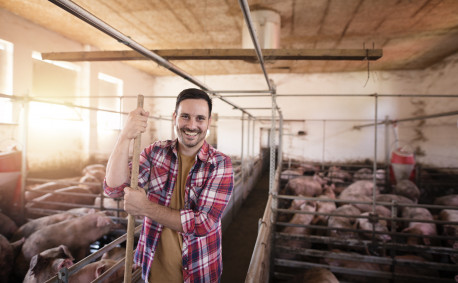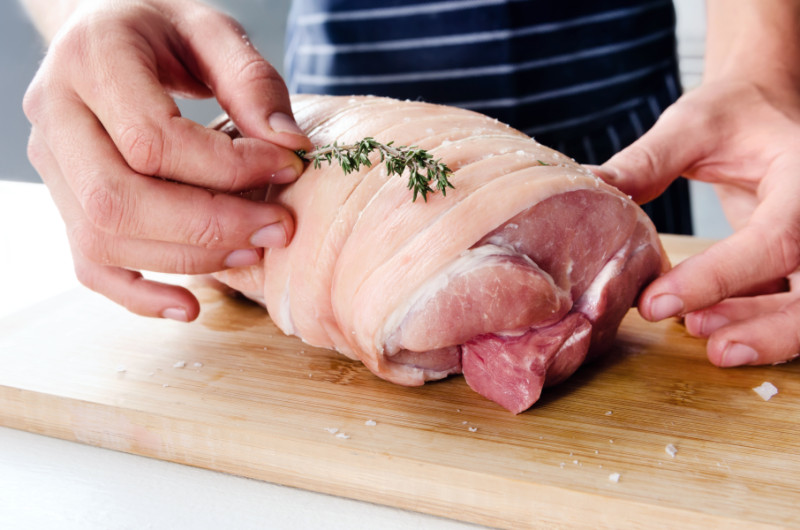Different Cuts of Pork
With classics like bacon, ham and sausage, it’s hardly a surprise that pork is consistently one of the most widely consumed meats in the world. And yet these delicious staples only scratch the surface of all that pork has to offer. Whether you’re a tenderloin tenderfoot or a pork chop champion, there’s plenty to savor in this breakdown of our favorite pork cuts and a few delicious ways to cook them.
Pork Belly
As the name suggests, pork belly is meat from the pig’s underside, leftover after the loin and spareribs have been removed. Thanks to its rich flavor and tenderness, it’s a popular choice of restaurant chefs but can also be easily cooked at home.
Whether roasted, smoked, seared or braised, pork belly’s versatility lends itself to all kinds of experimentation in the kitchen. If you’re looking to explore, we recommend this oven-roasted honey-glazed pork belly recipe or these juicy pork belly burnt ends.
Pork Chops
Whether grilled, sautéed, baked, stir-fried or air-fried, it’s no wonder pork chops are the most popular cut of pork. Made up of the meat between the pig’s hip and shoulder, pork chops come in a few varieties, including porterhouse, ribeye, sirloin, center cut and blade chops.
Although deciding on the perfect chop for your next dinner may seem overwhelming, finding out which choice is right for you is just a click away. No matter which cut or thickness you choose, they are yield flavorful results.
Pork Loin Roast
Cut from the area between the pig’s shoulder and top of the leg, the pork loin roast can be purchased either bone-in or deboned. Despite the extra effort of cutting around the bone, bone-in loin roasts tend be more flavorful and succulent, while boneless pork loin roasts have the added benefit of being able to be rolled and tied for cooking.
Pork loin roasts are great when roasted or barbecued over indirect heat, and they benefit from marinating in brine or being rubbed with a mixture of spices. Cooking with a moist heat should be avoided, as the pork loin roast can easily fall apart and become tough.
Pork Ribs and Rib Roast
Pork ribs can be cut and cooked in a variety of ways, including rib tips, baby back, spareribs, St. Louis-style and country-style ribs. Pork ribs are especially good when served directly from the grill or — for some extra tenderness — allowed to rest for one hour after cooking, wrapped in foil and placed in brown paper bags.
Pork rib roast, also known as rack of pork, is typically “frenched” before being cooked. Frenching is cutting the meat away from one end of each rib so the bone is exposed. Not only is this a delicious dish, but the presentation also provides a lovely centerpiece for any special occasion. This cut is not always available at the supermarket, but you can often order pork rib roast ahead of time from your store’s meat department or a butcher.
Pork Shoulder
Pork shoulder is best known for being the cut used to make pulled pork, but this cut has plenty of other serving options. Also known as picnic roast, Boston butt, blade roast or pork butt, the pork shoulder can be braised, smoked, roasted, grilled or slow-cooked.
When making pulled pork, slow-cooking on low for six to eight hours (or on high for four to five hours) allows the meat to become so tender it starts to fall apart, making it that much easier to shred.
Pork Steak
Cut from the pig’s shoulder, this cut is also commonly called the pork blade steak. Whether braised, sautéed or grilled, this cut’s quick cooking time makes it an ideal choice for a family dinner or neighborhood cookout.
With your choice of a rub or marinade, your pork steak can be cooked and ready to serve in as little as 10 minutes — five minutes grilled on each side is usually enough to reach the minimum internal temperature of 145 degrees. For the juiciest possible steak, let the meat rest for three minutes before serving.
Pork Tenderloin
Pork tenderloin is cut from the full pork loin and known for being lean, flavorful and easy to cook. This delicious, easy-to-prepare cut also happens to be one of the most nutritious pork options, as it’s just as lean as a boneless, skinless chicken breast.
Great with simple seasonings when roasted, grilled or sautéed, this cut can be served on its own or as a delicious flatbread topping.
Ham
Ham makes up the meat of the hind leg of the pig and is usually cured and smoked. Cooking a ham can seem intimidating, but it’s easier than you might think. Spiral-sliced hams are often pre-cooked and sliced and only need to be baked in a shallow pan at 325 degrees for 10 minutes per pound (or 20 minutes per pound if the ham is only partially cooked to ensure it reaches an internal temperature of at least 145 degrees). Once baked, the thin spiral slices make it a versatile dish perfect for breakfast, lunch or dinner.
Ham can be purchased in both boneless and bone-in varieties. Although boneless hams are generally easier to cut and serve, whole bone-in hams are great for feeding a group and can be cut into two smaller cuts: the shank end and the butt end. The shank end makes the carver’s job easier, but the butt end tends to be leaner.
This is just a sliver of all you can do with different cuts of pork, but if you’re interested in learning more about these cuts and dishes that feature them, Real Pork has even more options and recipes for you to explore. The next time you think about cooking pork, don’t be afraid to go hog wild!

